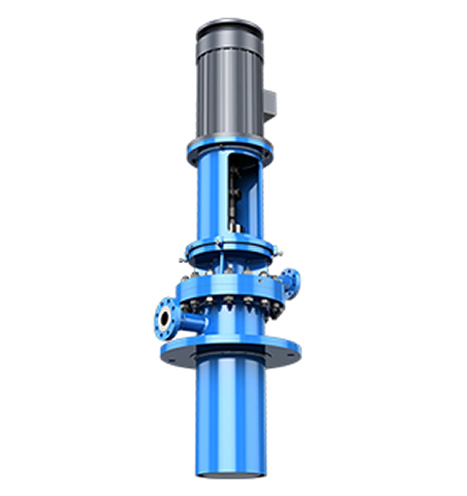Vent Requirements Of The Canned Vertical Turbine Pumps (double casing vertical barrel centrifugal pumps)
The extent of venting requirements depends on the application and installation requirements.The
following instructions may be used as a guide insofar as they apply to the Canned Vertical Turbine Pump (double casing vertical barrel centrifugal pump) as delivered. For type, position and dimensions of the vent connections please see drawing.
Do not mix up connections. After laying the pipes (and also after repairs), check the pipe runs.
General recommendation
Vent valves are generally installed at one or more high points of the Canned Vertical Turbine Pump (double casing vertical barrel centrifugal pump) casing waterways. They are used to facilitate priming of the Canned Vertical Turbine Pump (double casing vertical barrel centrifugal pump) and to prevent trapping of air or vapor in the casing during operation.
Canned Vertical Turbine Pumps (double casing vertical barrel centrifugal pumps) handling flammable, toxic, or corrosive fluids require vent piping connected in such a way that the safety of operating personnel and the installation is ensured (i.e. to the suction tank). The suction vents of Canned Vertical Turbine Pumps (double casing vertical barrel centrifugal pumps) taking liquids from a closed vessel must be piped to the gas phase of the suction tank.
Venting lines shall continuously rise up in order to avoid air/gas entrapment.
A vent connection for the suction can and a vent connection for API Plan 13 are Flowserve standard
supply in order to allow venting of both, the suction and discharge areas of the Canned Vertical Turbine Pump (double casing vertical barrel centrifugal pump). For Canned Vertical Turbine Pumps (double casing vertical barrel centrifugal pumps) supplied with gas coffer dam only the suction CAN will be fitted with a vent connection.
The vent piping is not within scope of supply.
Standard design
Prior to start-up the Canned Vertical Turbine Pump (double casing vertical barrel centrifugal pump) must be vented through connection N3 to ensure the Canned Vertical Turbine Pump (double casing vertical barrel centrifugal pump) will be fully filled with liquid. Time needed for initial venting as well as the need for continuous venting during operation depends on the kind of service.
Canned Vertical Turbine Pumps (double casing vertical barrel centrifugal pumps) in stand-by (idle) shall be continuously vented through connection N5 (Fig.2), to avoid build-up of vapor-bubbles or gas.
Gas Coffer Dam design
To prevent icing of the mechanical seal, all Canned Vertical Turbine Pumps (double casing vertical barrel centrifugal pumps) handling liquids at temperatures below -50°C (60°F) are fitted with a gas coffer dam.
Prior to start-up the Canned Vertical Turbine Pump (double casing vertical barrel centrifugal pump) must be vented through connection N3 to ensure the Canned Vertical Turbine Pump (double casing vertical barrel centrifugal pump) will be fully filled with liquid.
Canned Vertical Turbine Pumps (double casing vertical barrel centrifugal pumps) in stand-by (idle) shall be continuously vented through connection N5 (Fig.3), to avoid build-up of vapor-bubbles or gas.
























